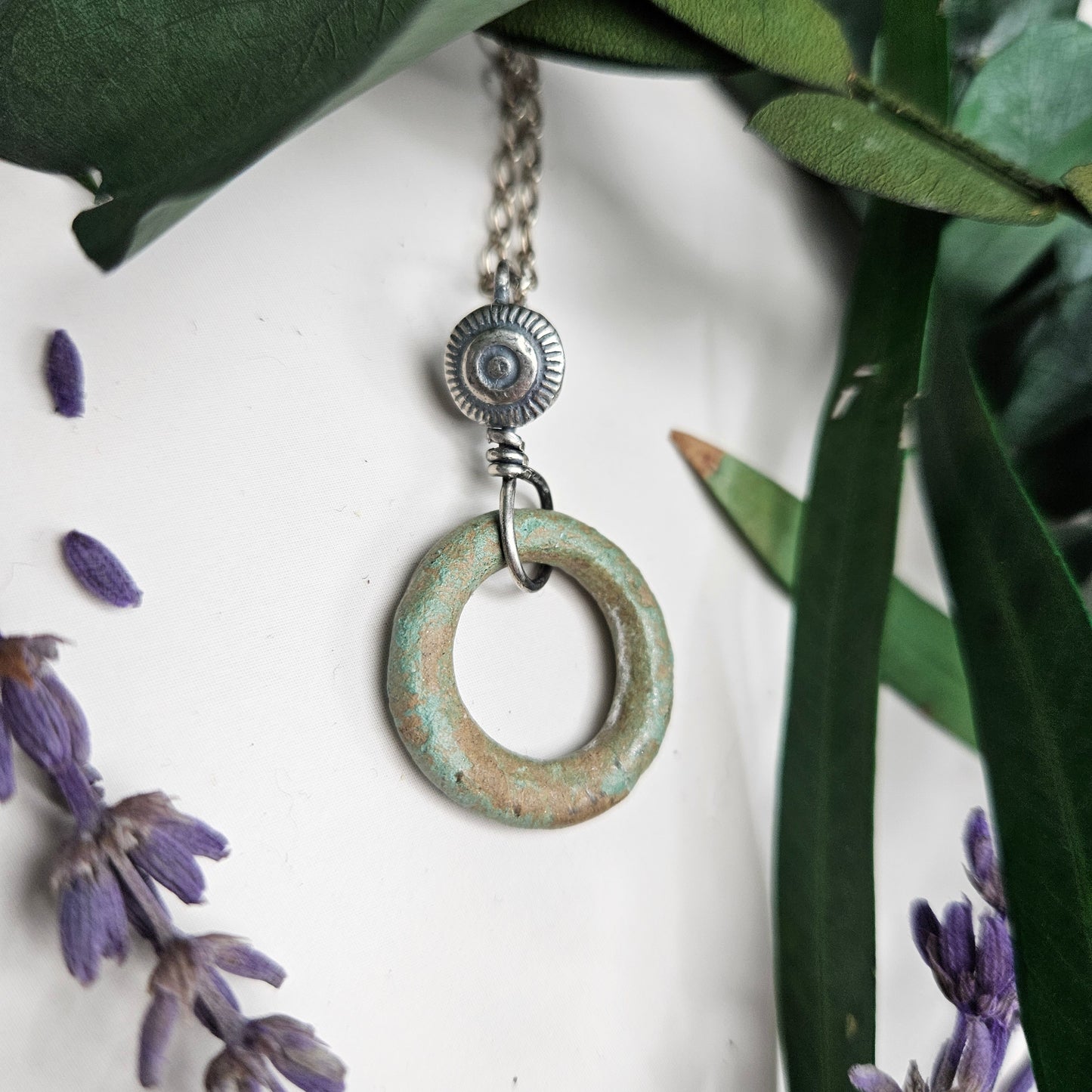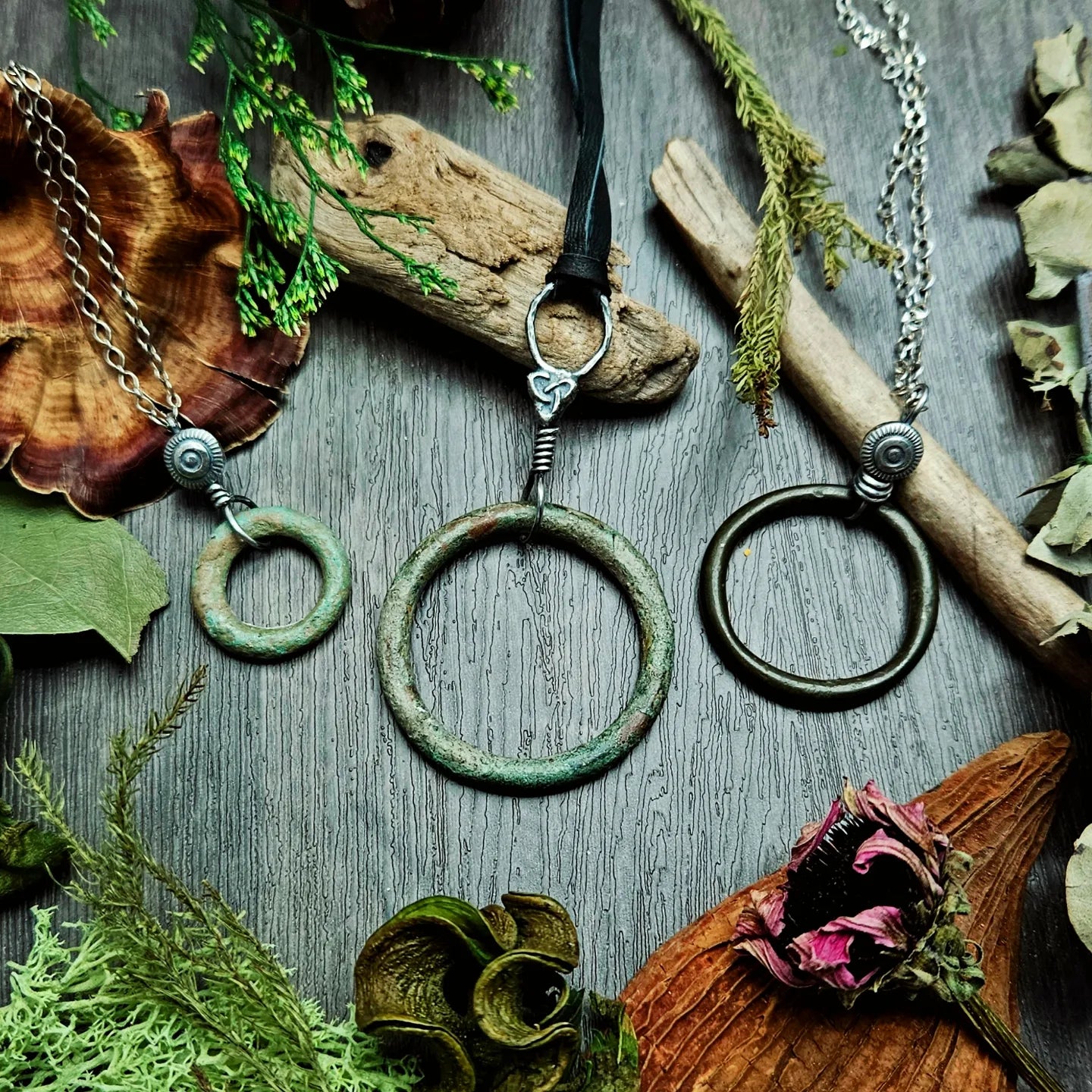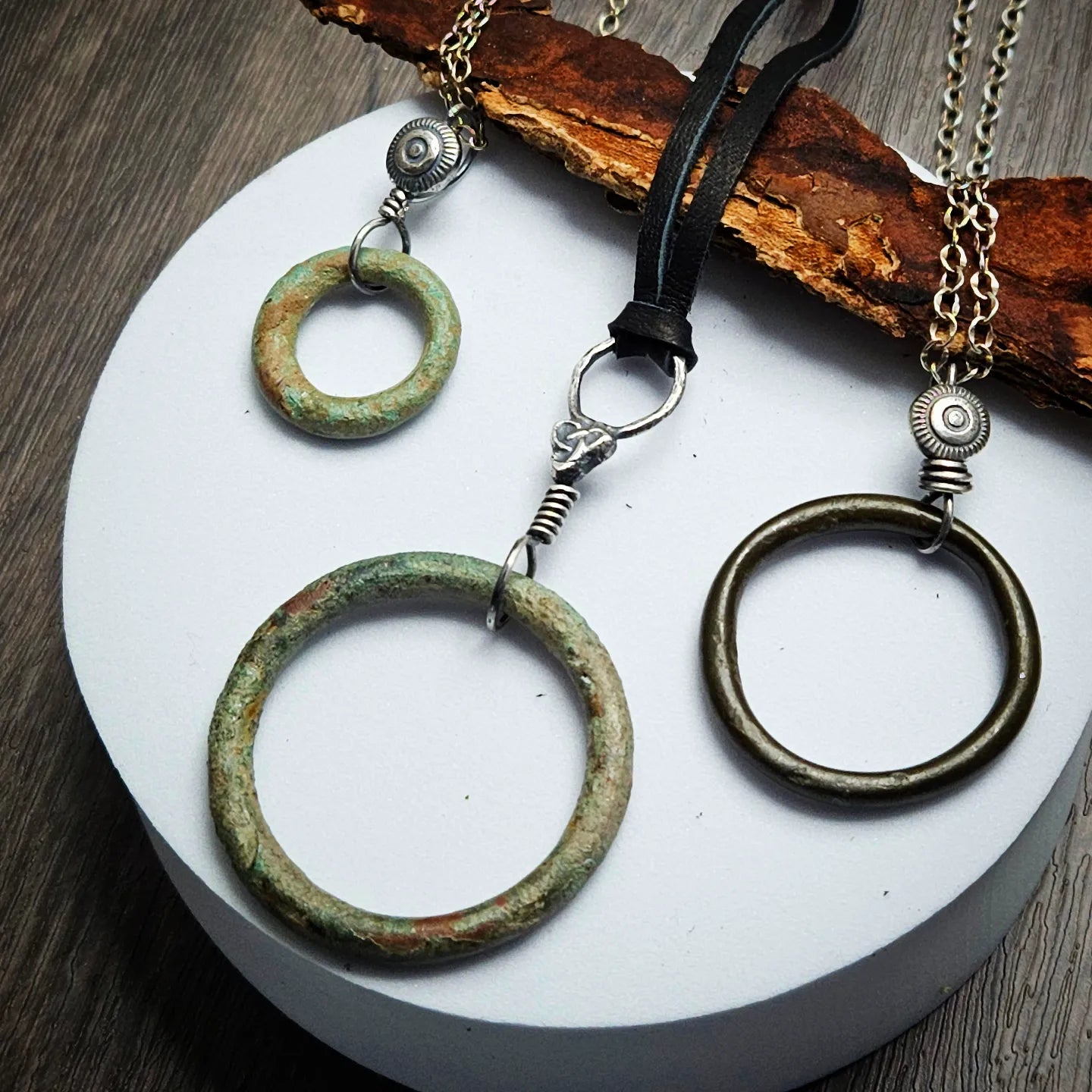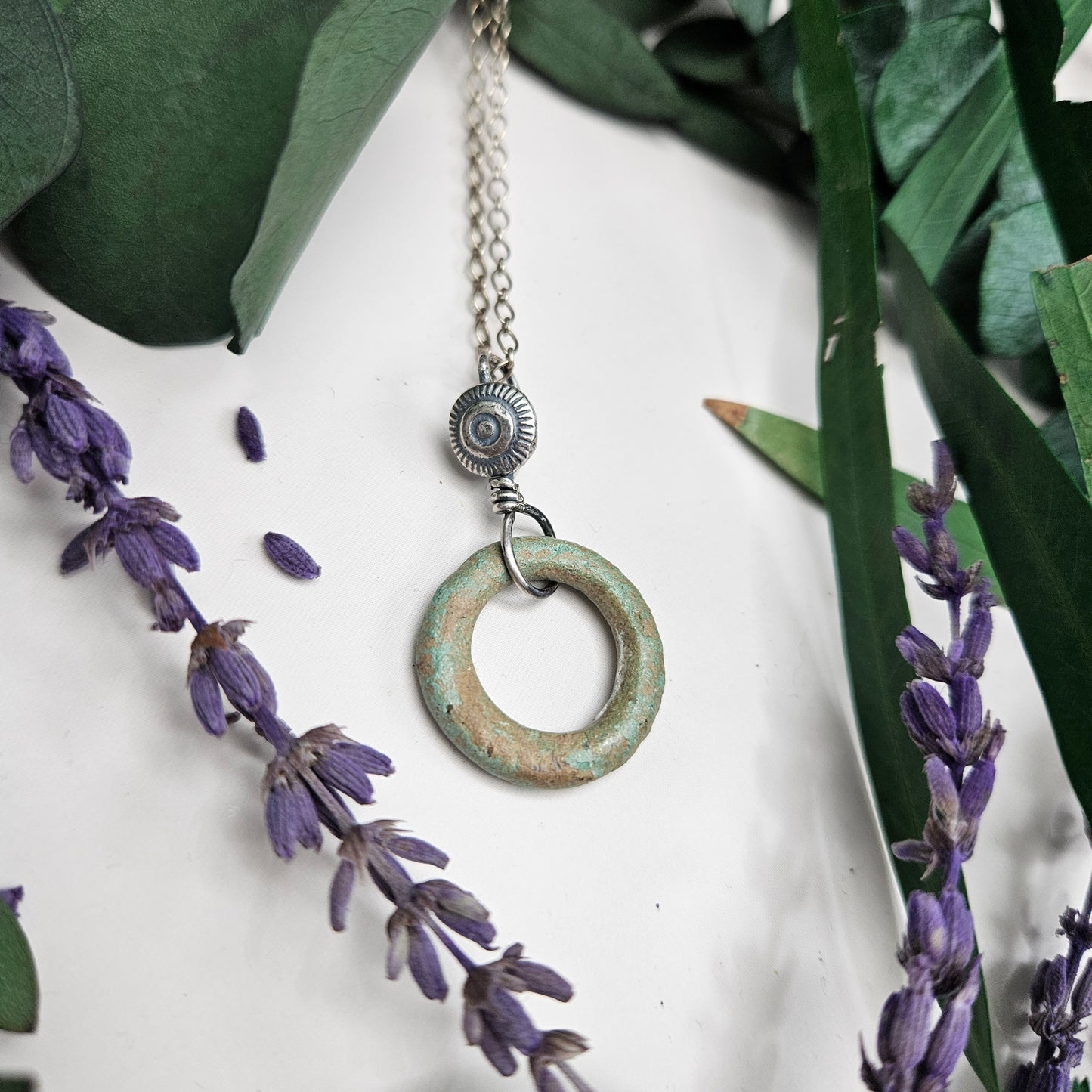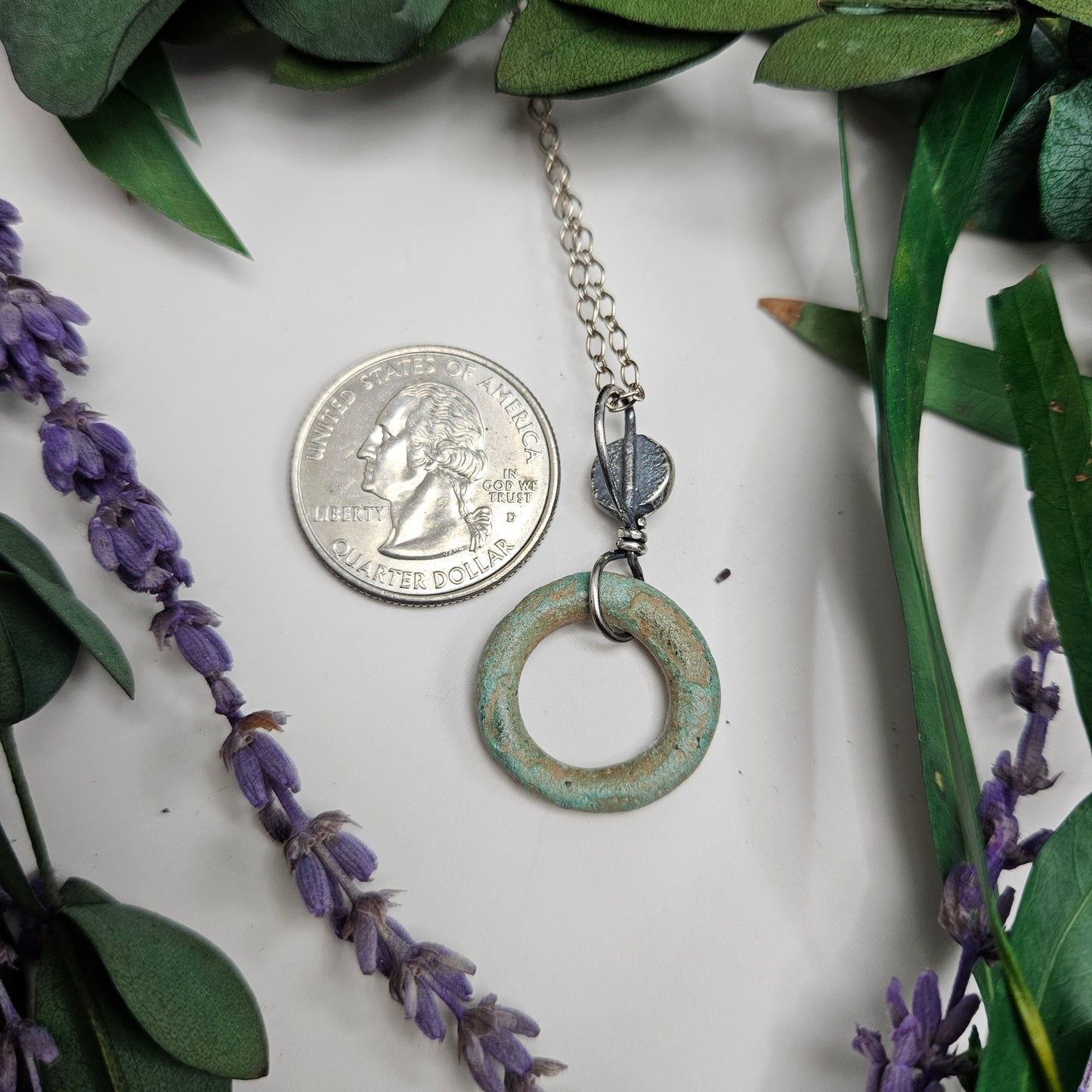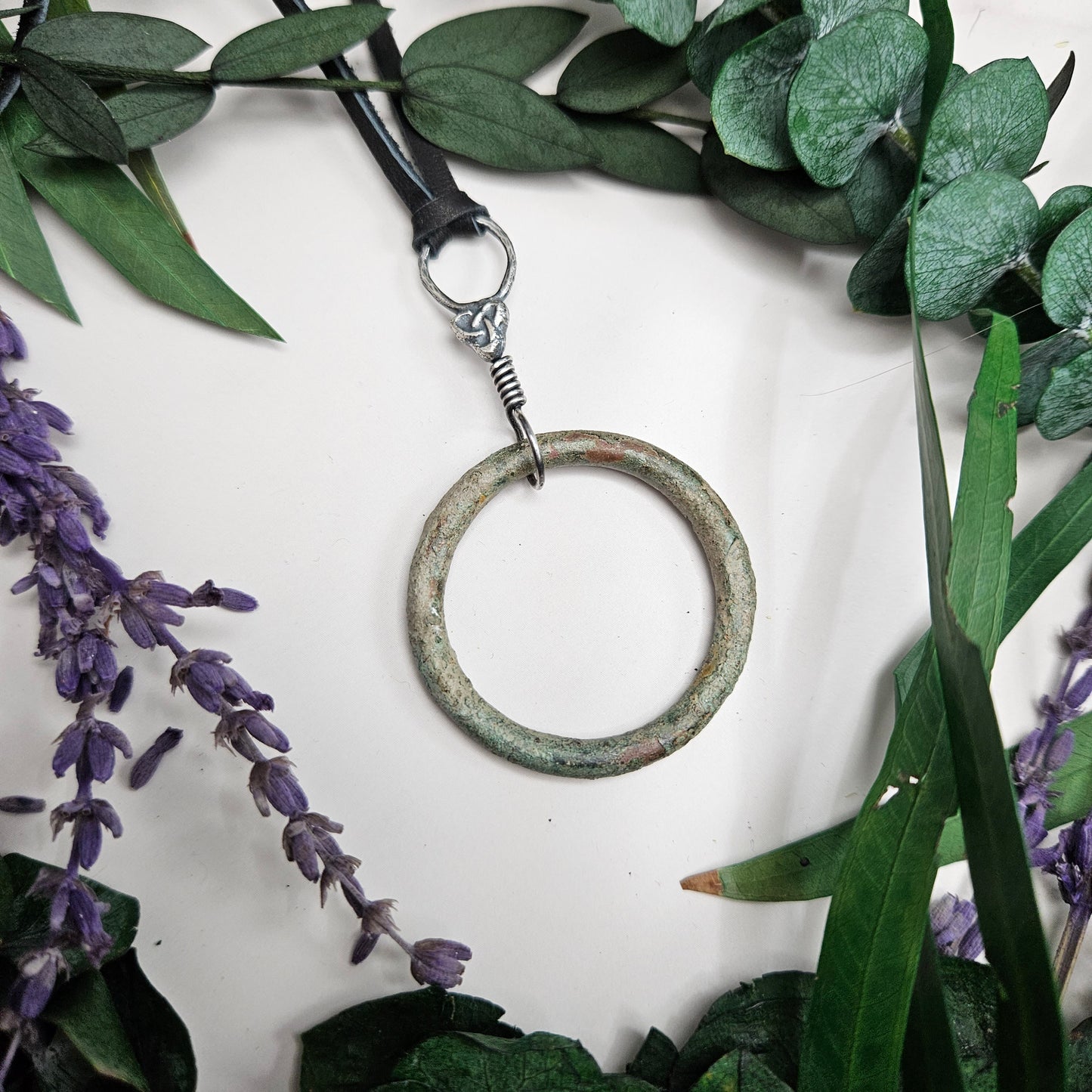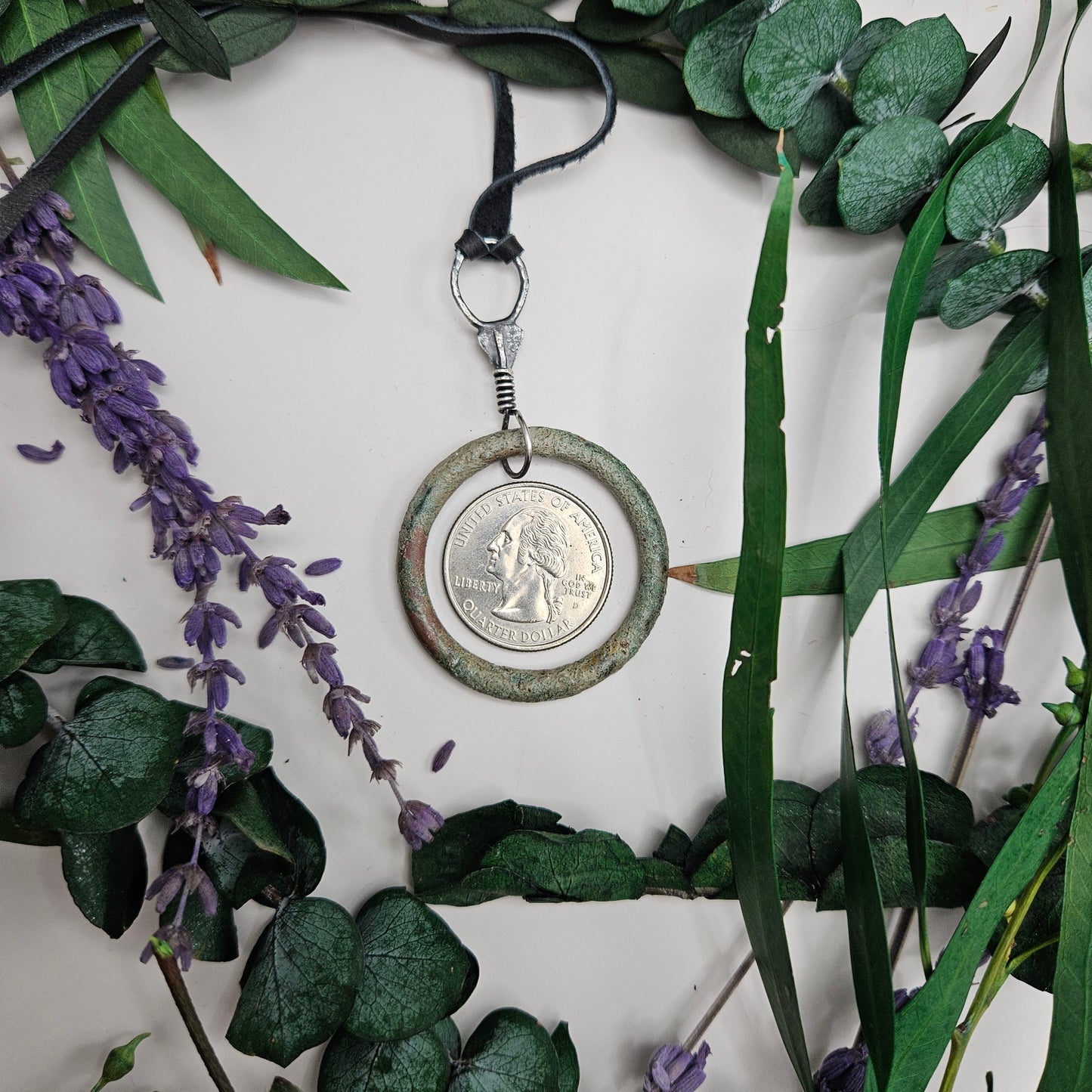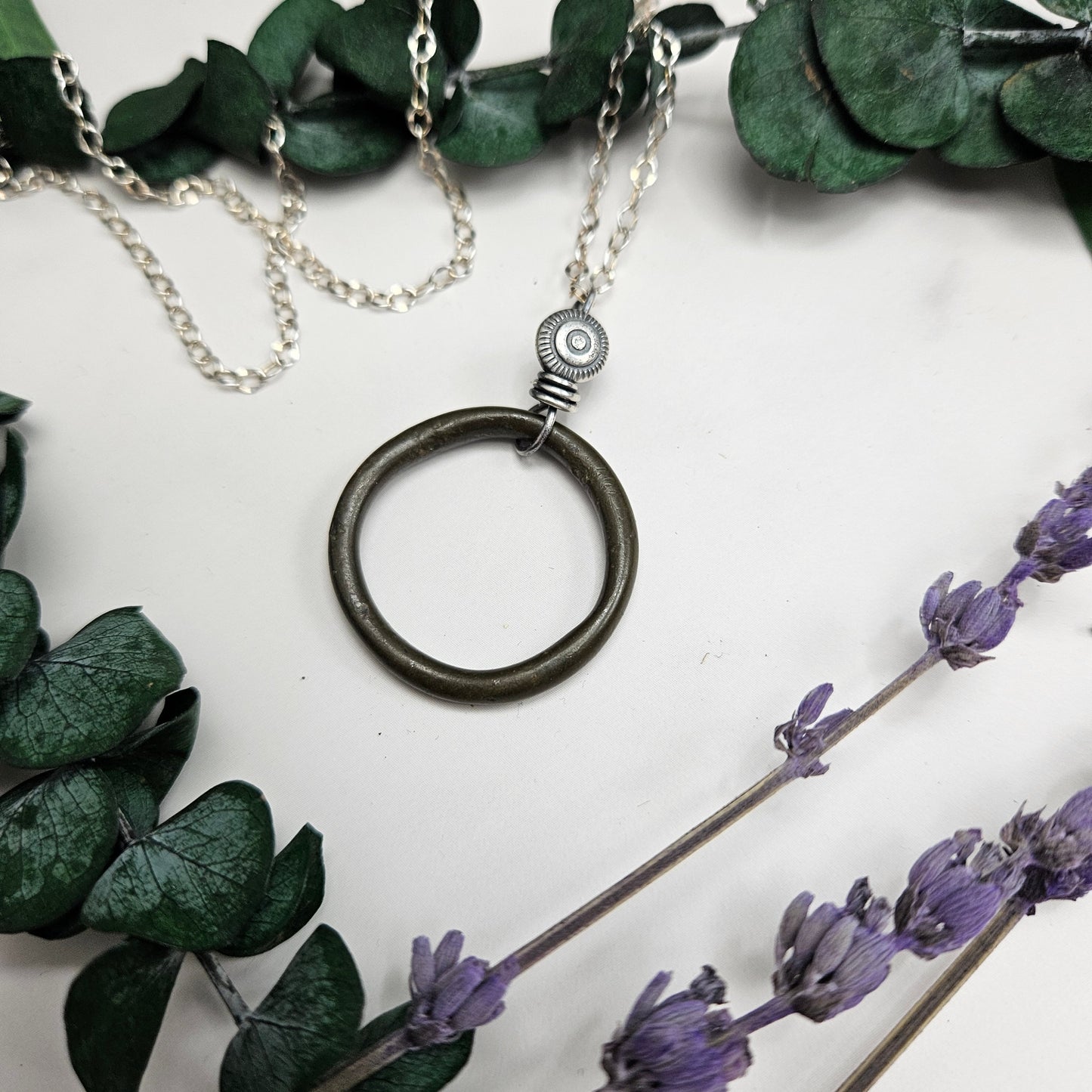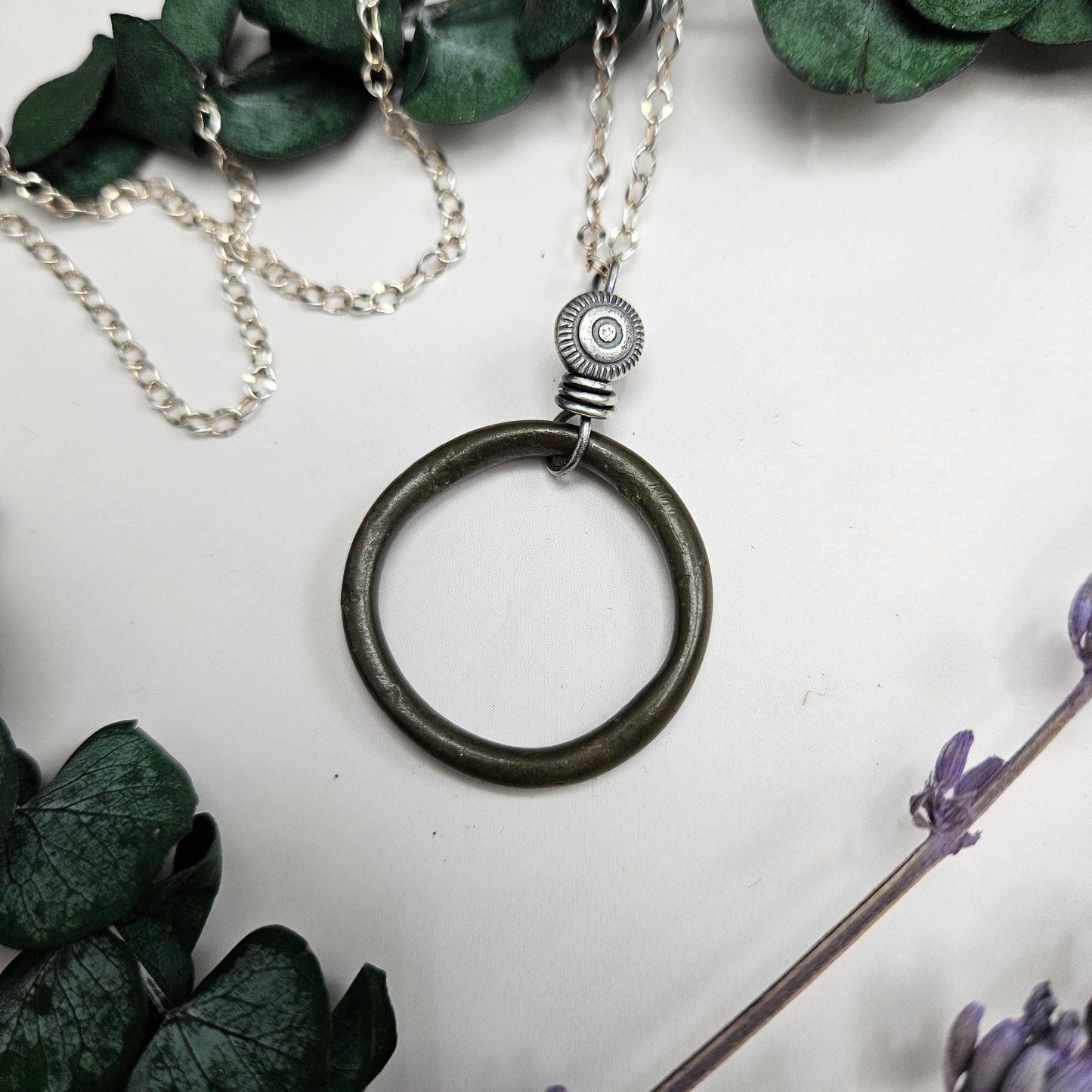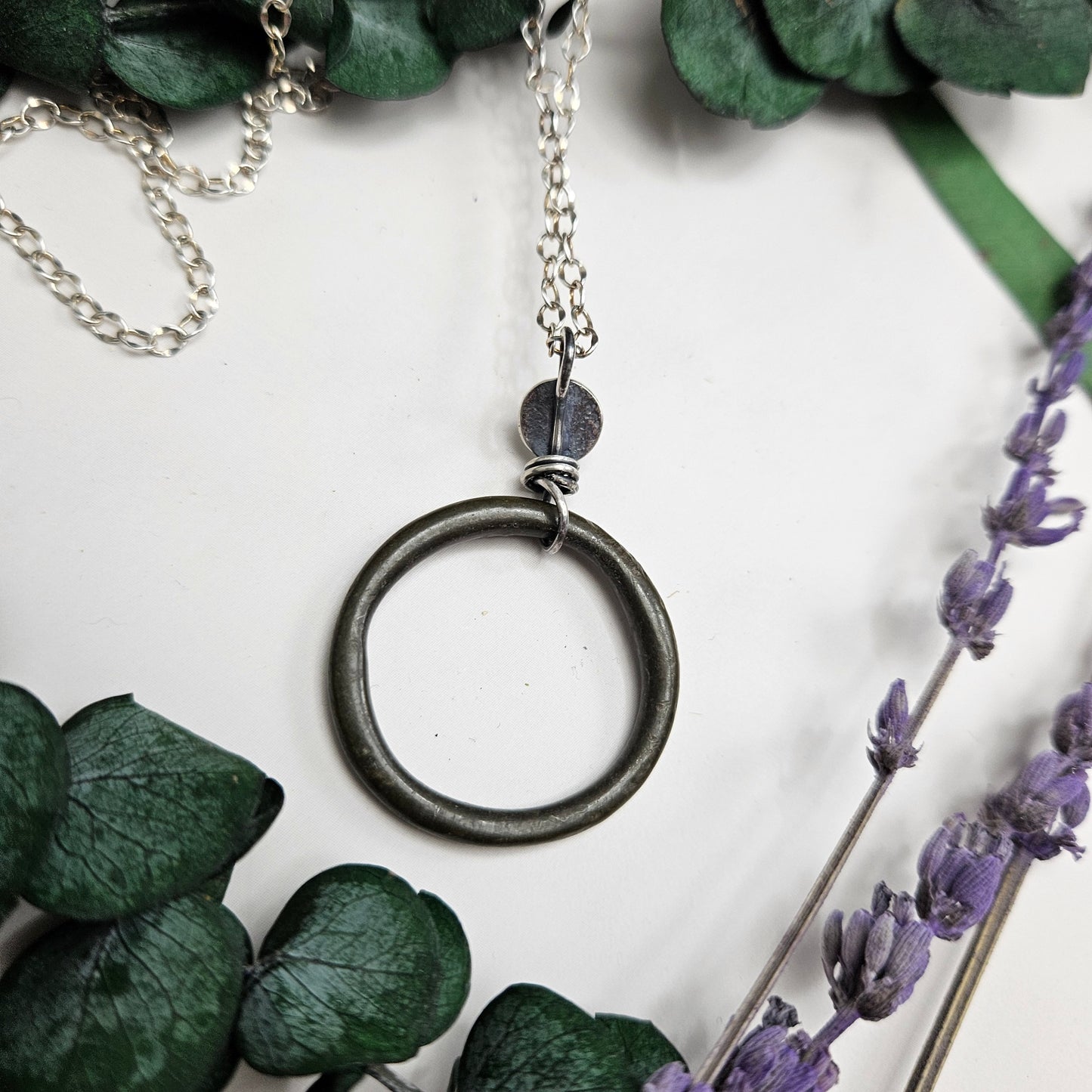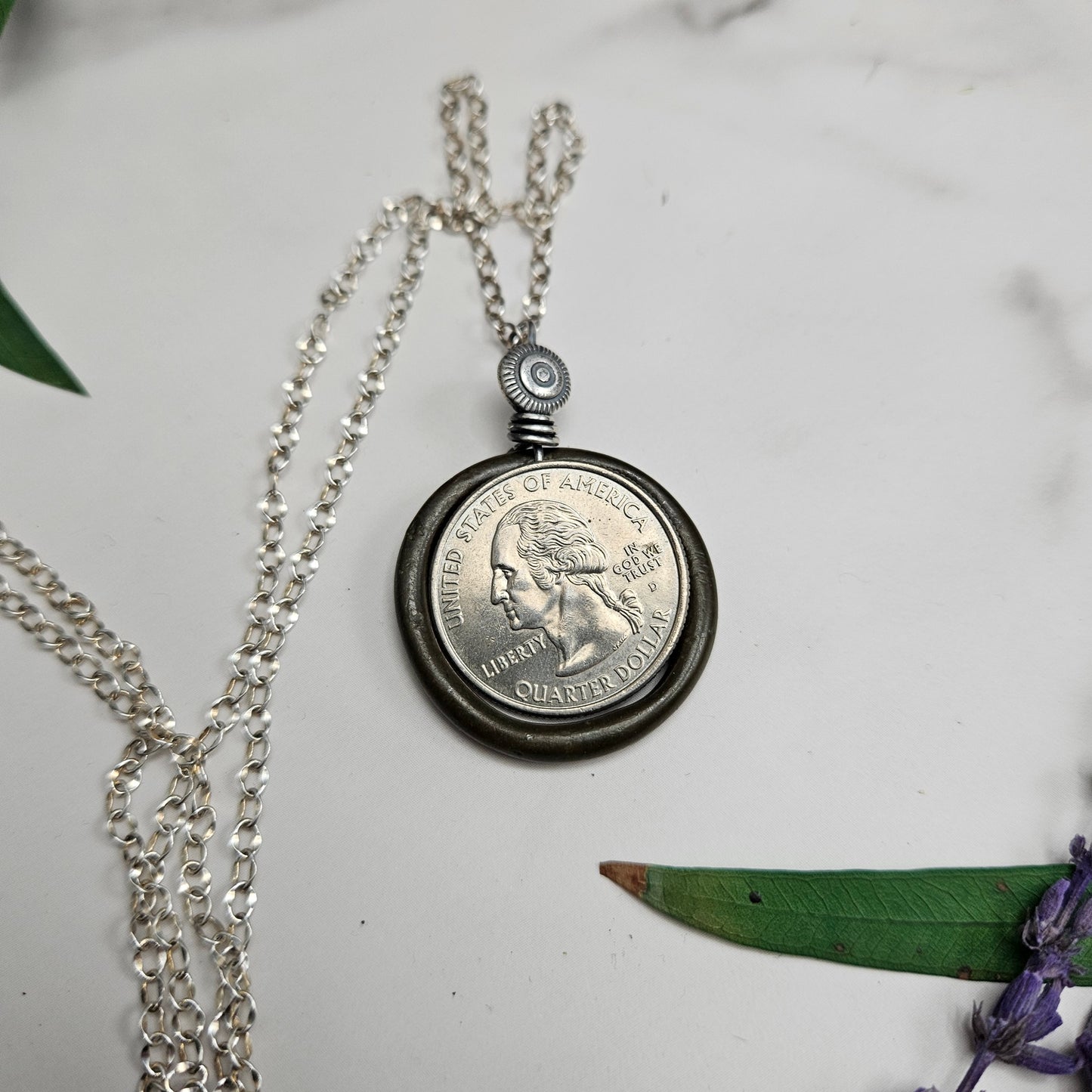Scylla & Stone
Celtic Bronze Ring (Proto Money) Necklaces
Celtic Bronze Ring (Proto Money) Necklaces
Couldn't load pickup availability
Materials in Chain/Bail/Artifact:
- Style A: Sterling silver chain, sterling silver bail, bronze artifact
- Style B: Italian leather cord, sterling silver bail, bronze artifact
- Style C: Sterling silver chain, sterling silver bail, bronze artifact
Chain and Closure:
- Style A: Sterling silver chain (not adjustable), lobster claw closure, 20"
- Style B: Italian leather cord, knotted closure (not adjustable), 30"
- Style C: Sterling silver chain (not adjustable), lobster claw closure, 23"
Ancient Artifact:
- Style A: Teal patina Celtic bronze ring, ~2cm diameter
- Style B: Teal patina Celtic bronze ring, ~4cm diameter
- Style C: Dark brown patina Celtic bronze ring, ~3cm diameter
About:
These bronze rings made their way around Europe LONG before struck coins. In fact, the term "Celtic" may also be a misnomer, as researchers posit that this type of currency existed in the Bronze Age -- LONG before the Celts (not that the Celts didn't also use these).
Ancient Europeans would often wear this currency on their persons like jewelry, or tied to rope belts. They were useful because they were practical -- Rings could not only be smelted down, but they could also be used to attach and mend clothing!
Then again, some other researchers posit that these were ONLY used in strapping on clothing, and not for currency. However, due to the later consistency of the rings and their evolved ornate forms, it's still very much likely they were used in trade.
Since St. Patrick's Day is coming up this week, I thought it would be the perfect time to debut these bebes! Though, it should be noted the Celts existed ACROSS Europe, and not just in Ireland!
These ancient rings came to me from a historical estate collection that included other ancient European coins, so I sadly do not know exactly where in Europe they were found!
Note: These artifacts are identified to the best of my ability using any letters/symbols that are visibly available, and searching through available references, such as numismatics databases and antiquity auctions. Please note that while I try incredibly hard to correctly identify them, I am just a hobbyist -- not an expert. Because these artifacts are ancient, often spending hundreds of years buried in the ground, there will be imperfections in surface, patina, and shape.
Materials
Materials
Dimensions
Dimensions
Care information
Care information
